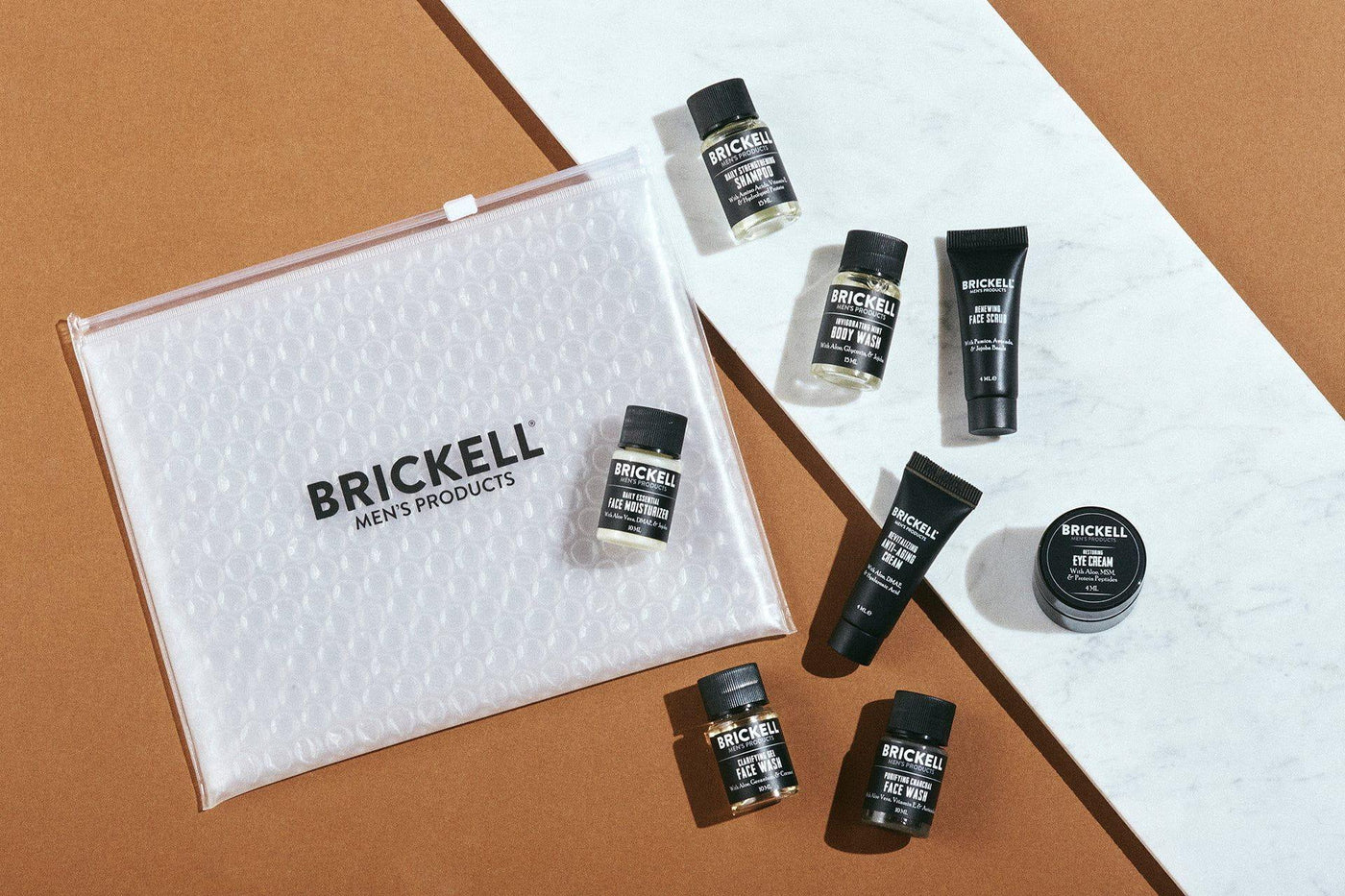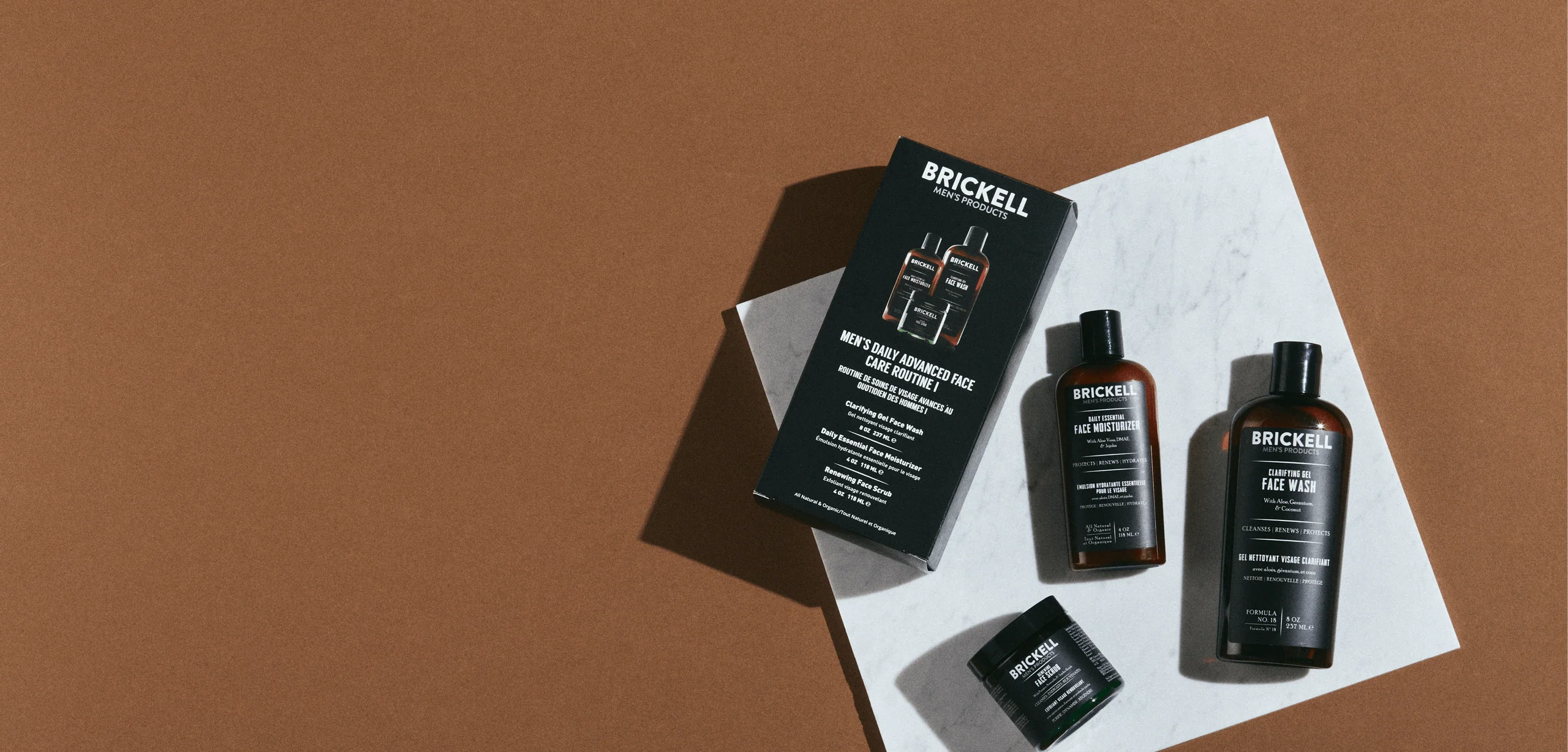The Grooming Manual
What Are AHAs and How Do They Fit in Your Men’s Skincare Regimen?

If you’ve ever bitten into a lemon or a particularly acidic orange, you’re well acquainted with the fact that many fruits and plants naturally contain acids. Not surprisingly, these natural compounds can be beneficial for your skin.
This includes AHAs, which gently exfoliate and clarify the skin without causing rashes or undue irritation.
Here’s how it works.
AHAs: The Basics
Before you determine how to include AHAs in your skincare routine, it's important to understand more about them.
Where Do AHAs Come From?
AHAs, or alpha hydroxy acids, are water-soluble, weak acids that generally come from fruits like grapes, pears, apples, oranges, and lemons. There are many kinds of AHAs, and each comes from a different source: These include:
- Glycolic acid (sugar cane): The most well-researched AHA, glycolic acid softens skin, decreases sebum, and increases circulation and collagen.
- Malic acid (apples and pears): Increases oxygen to the skin and improve skin tone and elasticity.
- Lactic acid (sour milk and bilberry): A gentle everyday AHA, lactic acid is antimicrobial. It also increases the skin’s water-holding capacity, thereby helping moisturize the skin.
- Tartaric acid (grapes): This AHA is also an antioxidant and can improve the skin’s tone and elasticity.
- Citric acid (oranges and lemons): This AHA brightens skin and stimulates collagen.
The most researched AHAs of the bunch are glycolic and lactic acids. Glycolic acid is generally considered to be the most effective AHA because it’s the smallest AHA molecule, and therefore the most easily absorbed.
How Do They Work?
AHAs dissolve the bonds that hold dead skin cells to the surface of your skin. They essentially unstick all the dead cells and debris from your face, revealing more youthful, even skin.
This not only evenly exfoliates the skin, but also encourages cell turnover, increases the skin’s ability to repair itself, and helps active ingredients reach the deeper layers of the skin.
Over time, this leads to many noticeable benefits like:
- More even and smooth skin texture
- Improved skin tone
- Better penetration of active ingredients (which leads to better results)
- Increased moisture and hydration
- Fewer fine lines and wrinkles
- Reversing signs of photodamage, including fine lines and hyperpigmentation.
Tips For Choosing and Using the Right AHA Products
Use this simple advice to select products that will work best for your skin type and anti-aging needs.
Consider the Type and Concentration of AHA
Different AHAs have slightly different purposes and results. For example, while glycolic acid is considered to be the most effective because of its small molecule size, it can also be the most irritating to those with sensitive skin. If you fall into that category, lactic acid might be a better choice.
Also, you’ll find different concentrations in different products. That’s where a lot of products try to trick you (or get you into trouble) - they either don’t have high enough concentrations to be effective or they’re too strong and they’ll actually strip your skin and cause irritation.
As a rule of thumb, you want to find products that have at least 5% of your acid of choice - though it can go as high as 8-12% without causing problems.
Find a Product With Moisturizing Ingredients
If a product has a mega-dose of acid without any soothing ingredients, it can be too much for your skin to handle. The goal is to find a balance between exfoliation, hydration, and other active ingredients so you get the results you want without any side effects.
To this end, look for a product that also contains soothing and moisturizing ingredients like:
- MSM: A compound found naturally in the skin, MSM reduces age spots and eventual skin pigmentation issues over time. It also helps to smooth skin by filling in the gaps caused by pollution, stress, weather, and UV rays.
- Aloe vera: Natural aloe vera hydrates and nourishes the skin thanks to nutrients like phytosterols (natural inflammatories), polysaccharides (which can restore your skin’s health), and vitamins A,B, C, D, and E.
- Jojoba oil: This ultra-healthy oil is biomimetic, or super similar in composition to your own natural sebum. This makes it a super effective moisturizing oil that won’t clog pores or cause irritation.
You can find all three ingredients in our Smooth Finish Glycolic Acid Peel.
Apply Your AHA Regularly
Nothing you apply will really make a difference on your skin if you’re not consistent - and the same goes for your AHA.
So what’s the sweet spot? We recommend that you start conservatively, applying your AHA once a week. From there, pay attention to how your skin responds: if it seems happy, you can up it to 2-4 times a week. If you notice some irritation or sensitivity, stick to once a week or back off altogether.
Don’t Forget Skin Protection
When you apply an AHA, you’re encouraging cell turnover and revealing healthy, baby-soft skin. The last thing you want is for that new skin to be damaged by the sun or other free-radical causing stressors like stress, pollution, or cigarette smoke.
That’s why it’s important to follow up on any AHA application with antioxidants and sun protection. The antioxidants will protect your fresh skin from any environmental damage while helping to stop existing damage in its track (you can find them in a daily moisturizer or a more targeted anti-aging scar cream).
Similarly, broad-spectrum sun protection will help prevent any damage from harmful UVA and UVB rays (you can go with SPF 20 for every day, or SPF 45 for total body protection).
Incorporate It into One Step of Your Routine
You can find AHAs in pretty much any skincare product out there: cleansers, toners, you name it. But keep in mind that there is such a thing as too much of a good thing. If you apply it in multiple products, you’re more likely to face irritation.
To start, add AHAs to one step of your routine and take it from there. Your skin will thank you for it.

